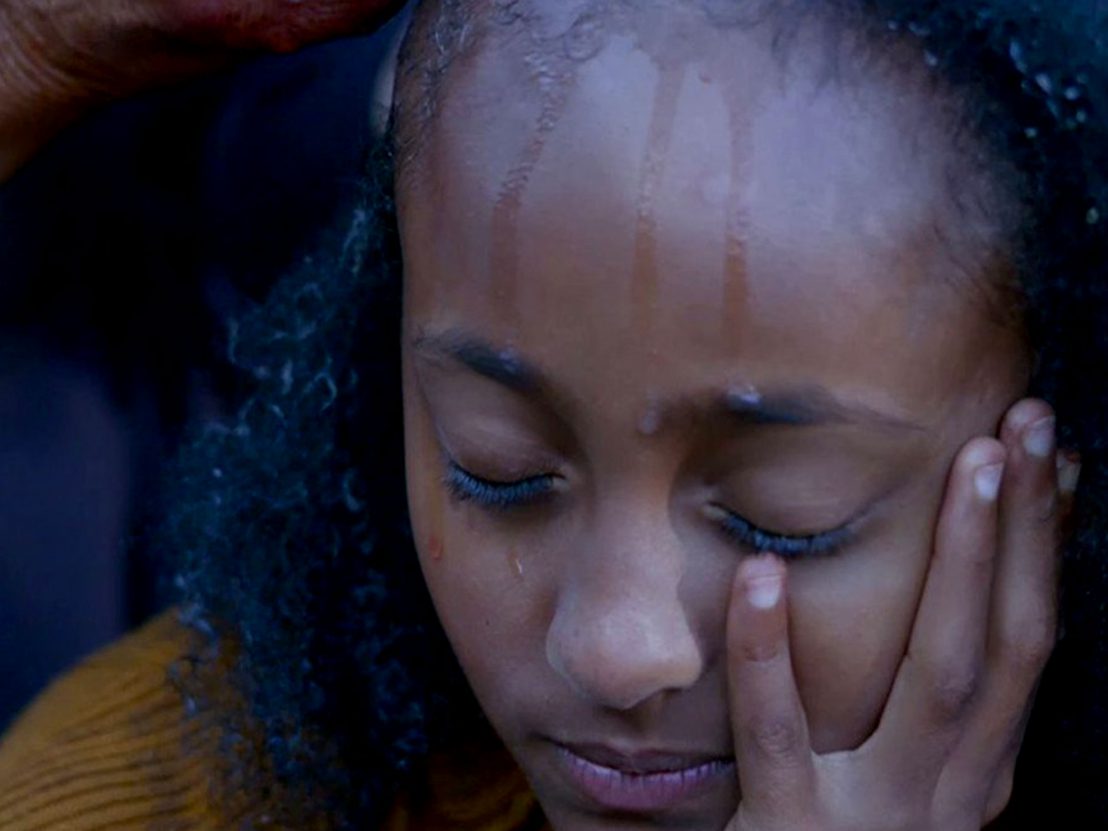
Water shapes our world. It nourishes, gives life, revitalises. Its vitality and necessity are undeniable, but so too is its power. In Mati Diop’s debut feature, Atlantics, the eponymous ocean, with its crashing waves and devastating undercurrent, is an ever-present force in the lives of the residents of a Dakar suburb on the Senegalese coast. It exists outside of their control, transforming the lives of young lovers, providing opportunities for growth that are so easily dashed on the rocks, and there are inescapable divisions in this coastal community that are only deepened by the surrounding water.
Diop constantly signals the impact of the ocean on the lives of those living in Dakar through a variety of stylistic and practical choices. Ada (Mame Bineta Sane) and Souleiman (Ibrahima Traoré), a young couple with no chance of a future due to her upcoming arranged marriage to the wealthy Omar (Babacar Sylla), take every opportunity to steal a moment together. Hidden from prying eyes, they seek solace in a concrete shelter on the vast expanse of the beach, the sound of the sea almost drowning out their declarations of love.
This is not a place of tranquillity; instead white-tipped waves crash loudly onto the shore, a continual reminder of the danger that lurks just below the surface. Diop choses to place the noises of the ocean high in the sound mix, while also placing short transition shots between key scenes in order to reinforce the centrality of water in the lives of Ada, Souleiman and their families. For them, the sea represents both hope and danger, a powerful contradiction that makes the tidal pull even stronger.
Atlantics is a film of divisions and duality: Ada is pulled between her upcoming marriage and her affection for Souleiman, a choice of wealth and social capital versus love. Omar offers security and all the material comforts that come with a middle-class lifestyle. Souleiman, meanwhile, toils on the construction site of a fancy new hotel, and along with his fellow workers has not been paid for three months – a key factor in their decision to go to sea. Diop once again visually accentuates this class divide through the presence of water and the sea. Omar exists in a sector of society where water is tame. It is for sport and relaxation; neither a dangerous entity nor a barrier to ambition. Ada, still hesitant about her upcoming marriage, meets with Omar at a private pool that runs adjacent to the deadly sea.
Here water is a sign of privilege, one that can be controlled by wealth and social status: the Atlantic is relegated to the background of the scene, calm and almost tranquil as the waves are rippling but not dangerous. The differences between Omar and Souleiman and the rest of the young workers is stark; the former takes the opportunity to swim languid lengths of the pool as a form of leisure. Diop’s camera follows his careful and deliberate movements, the strength and power in his body and confidence that he has in the water.
This is contrasted by the desperation and pain of one of the workers’ mothers when it is discovered that the boys have gone to sea, who screams that her son cannot swim. Control of and over the water is denied to those living in working-class Dakar, through both access to the spaces it is safe and a lack of leisure time in which to learn to how to survive in it.
The young women of Atlantique are beset by a very different experience with the sea, one that is not signified by themselves entering the dark waters, but instead through a power that is more direct and unexplainable. Rather than a sense of freedom and happiness, the young women of Dakar continue the battle for justice that has been left in their hands since the boys went out to sea. They are faced with violent fevers, bloody and bruised feet from their night-time missions and an overwhelming sense of loss. The transformative power of water here is one of deprivation, the absence presences of the young men who travelled out into the sea are screaming, demanding they be heard from the graves through the bodies of those left behind to fight for them.
Mati Diop’s mystical and haunting new film embraces the implications and cinematic language around the sea and water as powerful and transformative, but these are consistently subverted in a story about love, inequality and divisions.
Published 24 Nov 2019